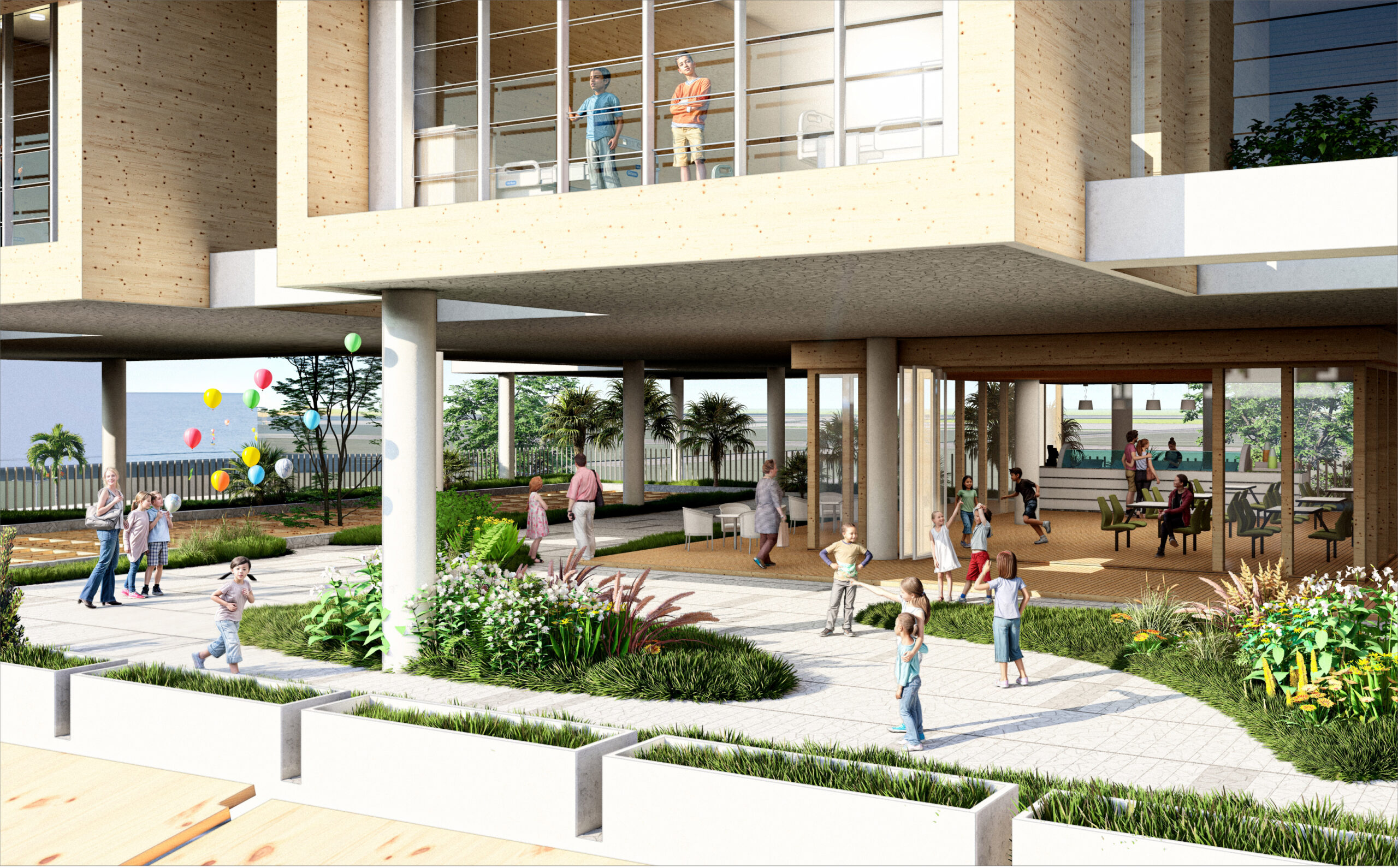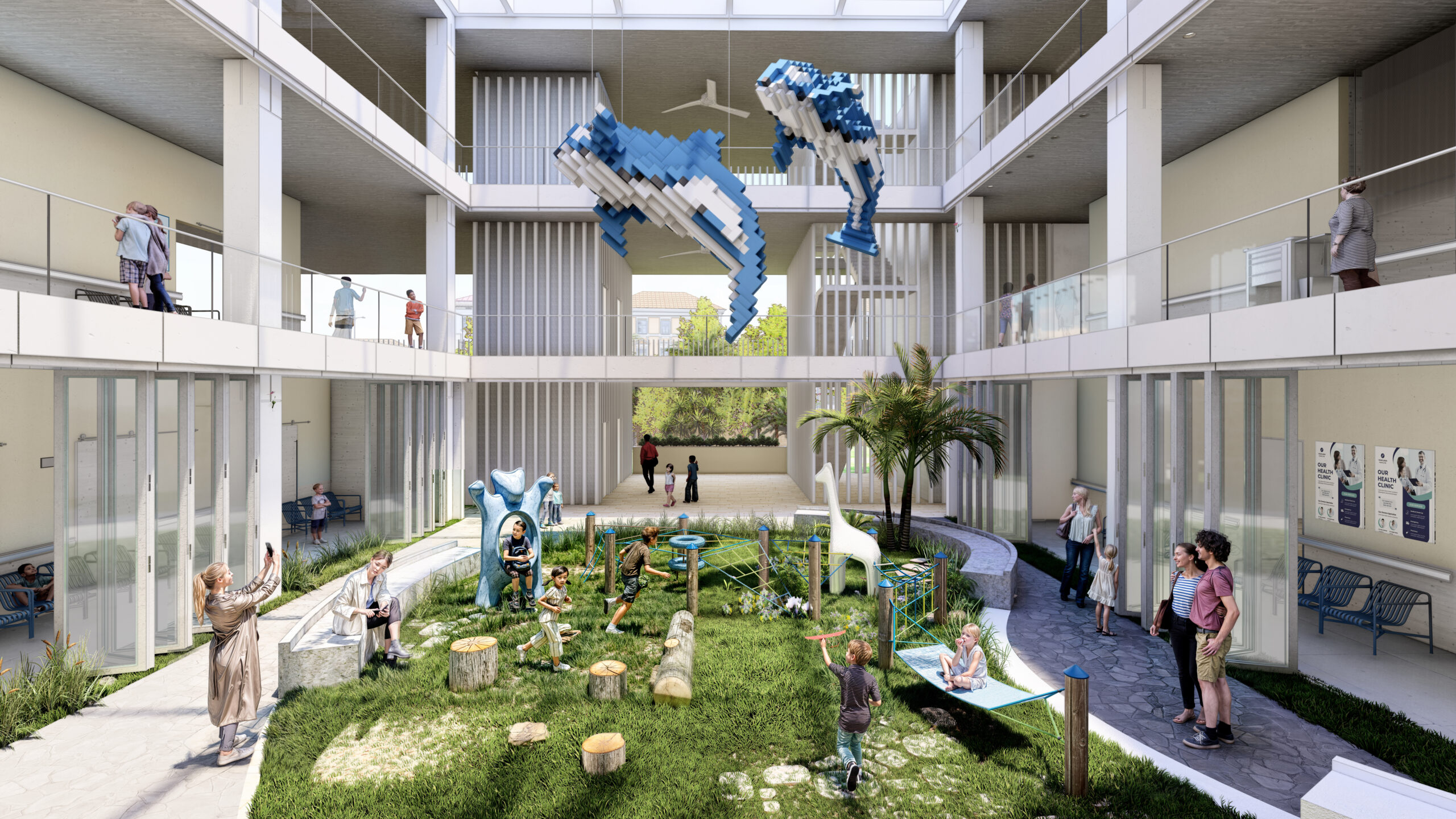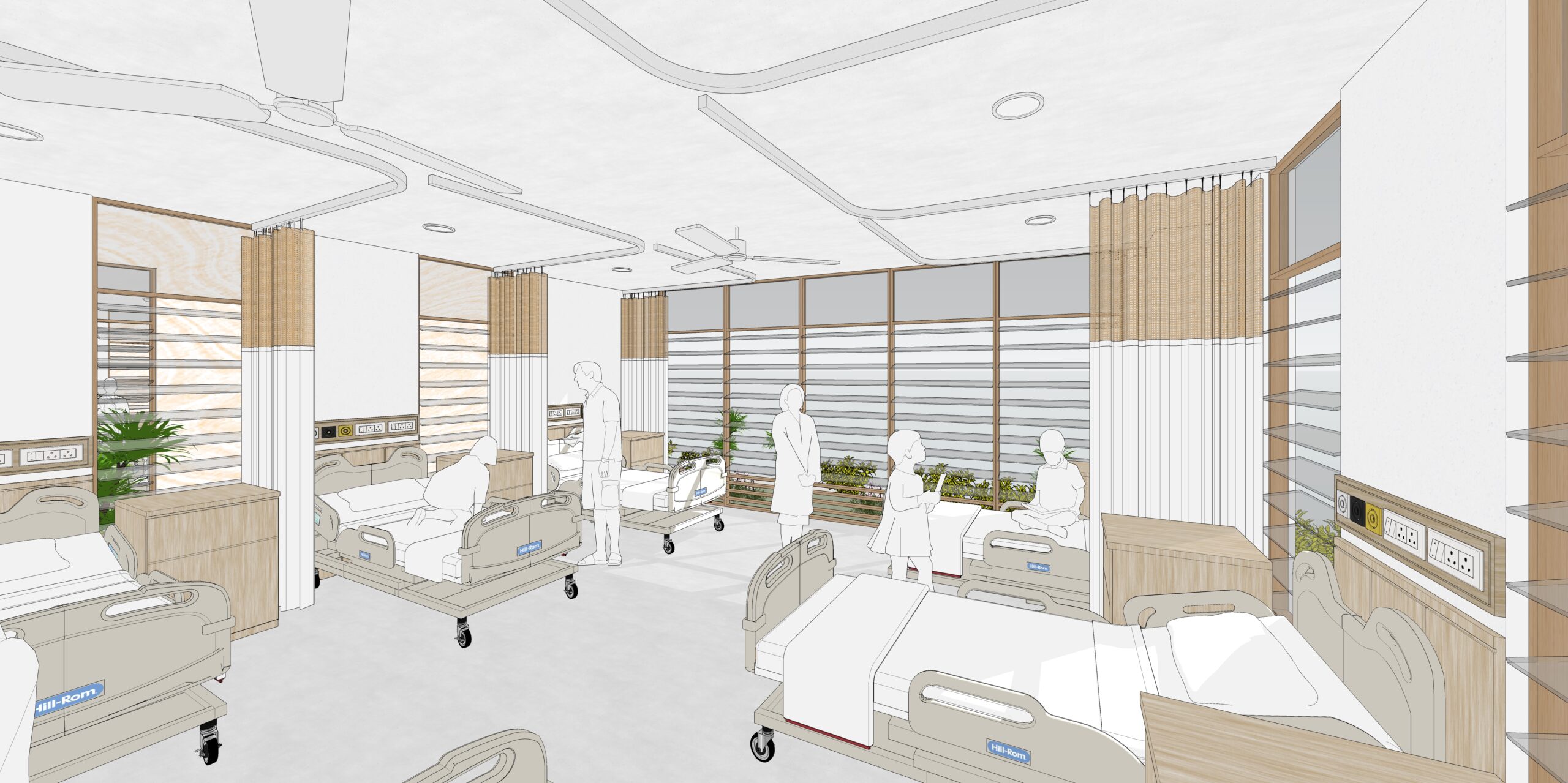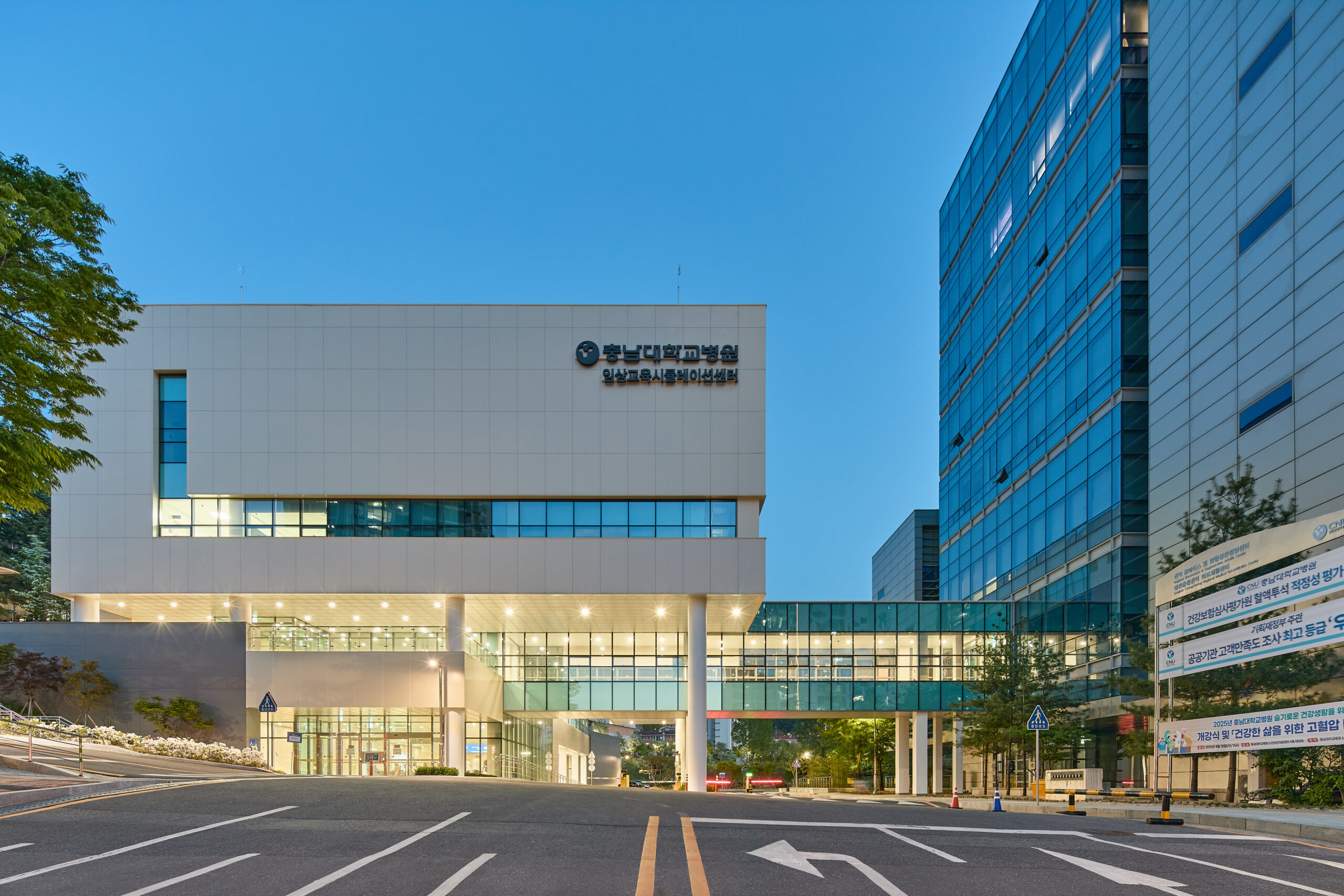HEALTHCARE + 2024 + PUBLIC + 9,056㎡
National Pediatric Hospital, Cambodia
In Cambodia, infectious diseases account for the majority of child mortality, and disparities in the quality of public and private healthcare services remain severe due to structural limitations in medical insurance and the high cost of infrastructure. In response, the hospital was designed to establish a spatial system that ensures safety from infection and allows sustainable operation within the region’s hot and humid climate.
The Medical Street and microclimate garden that penetrate the site bring natural elements into the lower floors while naturally guiding outpatients toward waiting areas. The outpatient and central clinical zones on the lower levels are organized around the microclimate garden, creating cooling effects through natural ventilation, while the circulation of outpatients and medical staff is clearly separated to maintain an infection-safe environment.
In Cambodian hospitals, six-bed wards are typically not air-conditioned due to limitations in power supply and operational costs. In contrast, one- and two-bed rooms—used by patients who can afford higher medical fees—are air-conditioned and similar to domestic hospital environments. To minimize this disparity, naturally ventilated six-bed wards were placed on the south side, and the one- and two-bed rooms were located on the north side. Voids were introduced between wards so that every bed in the six-bed rooms receives equal access to daylight and ventilation, with corridors positioned opposite open-air façades to encourage natural airflow.
In Cambodian hospitals, six-bed wards are typically not air-conditioned due to limitations in power supply and operational costs. In contrast, one- and two-bed rooms—used by patients who can afford higher medical fees—are air-conditioned and similar to domestic hospital environments. To minimize this disparity, naturally ventilated six-bed wards were placed on the south side, and the one- and two-bed rooms were located on the north side. Voids were introduced between wards so that every bed in the six-bed rooms receives equal access to daylight and ventilation, with corridors positioned opposite open-air façades to encourage natural airflow.
View of Hospital
View of Hospital
Korea-Cambodia Medical Street
Korea-Cambodia Medical Street
The waiting area is organized around the central courtyard, allowing natural ventilation in the public space. It is a nature-friendly play space for pediatric patients and a healing garden that calms the mind and body of visitors.
Family Garden: A healing space where both patients and their caregivers can briefly leave their hospital rooms and rest in the cool shade.
Microclimate Garden: A central courtyard-centered atmospheric space allows for natural ventilation in public spaces. It is a nature-friendly recreational space for pediatric patients and a healing garden that calms the mind and body of visitors.
A healing space for everyone
The waiting area is organized around the central courtyard, allowing natural ventilation in the public space. It is a nature-friendly play space for pediatric patients and a healing garden that calms the mind and body of visitors.
A room where all patients face the window
Openable windows next to the beds maximize natural ventilation.
Climate-Responsive and Infection-Safe Ward Design
Patient rooms were zoned according to prevailing wind directions, and circulation routes were carefully separated to prevent hospital-acquired infections. Nursing flows and work environments were optimized to create a comfortable and efficient workspace for medical staff. Every patient room has access to natural ventilation and daylight, forming a nature-friendly healing environment. Rest areas for pediatric patients and their families provide moments of comfort and relief, completing a hospital designed to promote both safety and well-being.









